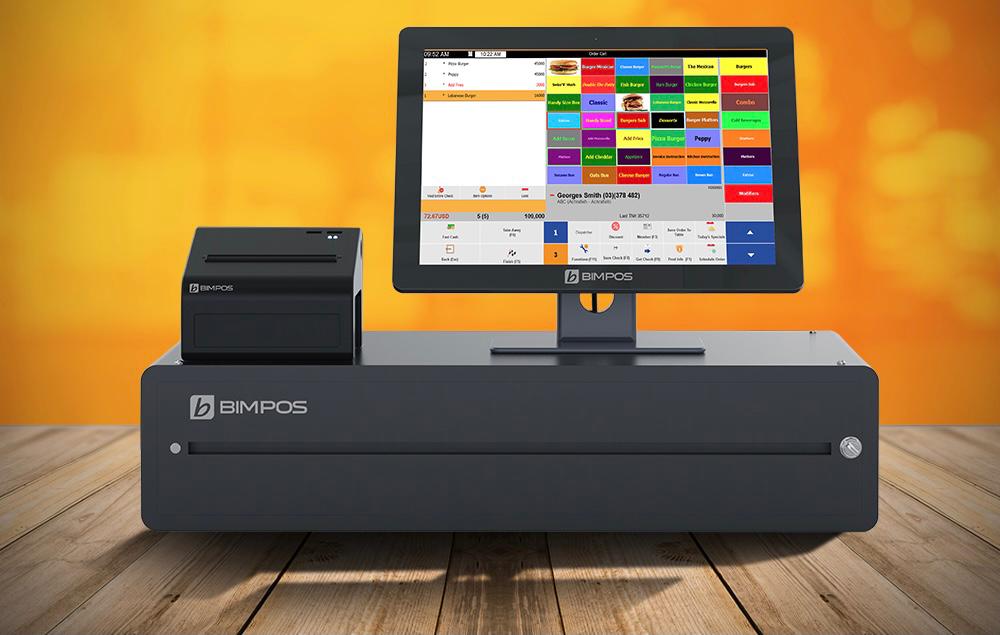Pos System for Small Business : The Point-Of-Sale System Simplifies Checkout Processes Efficiently
Unpacking the Power Behind Point of Sale Systems
Have you ever stopped briefly to consider what takes place the moment you swipe your card or tap your phone at a checkout? That flash activates a waterfall of processes, managed by advanced Point of Sale Systems. Far from being mere sales register, these systems function as the digital heart beat of retail operations, weaving together sales data, inventory, and client interaction.
Envision a bustling café where the barista handles orders, payments, and loyalty rewards at one time. The POS system isn't simply a tool-- it's the unseen partner guaranteeing every coffee is accounted for, every discount used properly, and every customer leaves satisfied. Restaurant POS. It's the difference between turmoil and smooth service
Core Functions That Drive Effectiveness
- Sales Deal Management: Tracks each purchase with accuracy, guaranteeing accuracy in billing and invoices.
- Stock Control: Immediately updates stock levels, informing when it's time to reorder.
- Client Information Collection: Gathers insights for personalized marketing and loyalty programs.
- Employee Tracking: Schedules shifts and records hours worked.
Why Does This Matter?
Believe about the last time you waited in a long checkout line. Aggravating, best? A well-implemented POS system slashes wait times by improving payment processes, reducing human error, and syncing sales with backend operations in real-time. It's like having a conductor assisting every note in the symphony of retail.
| Function | Advantage | Impact |
|---|---|---|
| Real-Time Analytics | Immediate sales reporting | Better decision making |
| Mobile Compatibility | Checkout anywhere | Boosted consumer experience |
| Integrated Payments | Several payment choices | Increased sales opportunities |
Does not it make you wonder how companies ever managed without these systems? In a world where every 2nd counts, the POS is no longer simply a convenience-- it's a need.
Translating the Celestial Puzzle
When peering into the night sky, have you ever wondered how ancient mariners pinpointed their location without contemporary innovation? Positional astronomy is the art and science behind that celestial navigation. Why does comprehending the precise position of stars and worlds matter? Due to the fact that even a minute mistake can send you miles off course, particularly when depending on the stars as more info your compass.
The Subtle Intricacies of Coordinate Systems
One may think the sky is a simple canvas, but it's a vibrant sphere dotted with moving targets. The equatorial coordinate system. POS-- ideal ascension and declination-- mimics Earth's own geography, however with a twist. The Earth's axis wobbles, a phenomenon referred to as precession, which discreetly shifts star positions over years. This demands consistent recalibration. Have you ever saw how Polaris doesn't constantly sit exactly at the North Celestial Pole? That's precession at work
Tips from the Observatory
- Utilize a high-precision chronometer to determine sidereal time properly; even seconds matter.
- Calibrate your instruments often to account for atmospheric refraction, especially near the horizon.
- Cross-check star catalogs-- various epochs can yield varying coordinates.
- Employ software that aspects in nutation and aberration for modern accuracy.
Impressive Anecdote
Consider the tale of a 16th-century navigator who, utilizing primary tools and naked-eye observations, calculated his ship's position with unexpected precision. His secret? Proficiency of celestial mechanics and a deep understanding that the stars, though relatively fixed, are part of a cosmic dance.
Precision Needs Patience
Attempting to identify a star without thinking about climatic distortion resembles trying to check out a book through a frosted window. Even the finest telescopes can be fooled by the atmosphere's fickle layers. Patience, numerous observations, and balancing results frequently reveal the true positional information. Isn't it interesting how the sky's evident stillness masks such complex shifts?

Translating the Essence of Favorable Operator-Valued Measures
Imagine attempting to record a shadow's true shape in a world where light bends unexpectedly. Positive Operator-Valued Steps (POVMs) perform a similar feat in quantum mechanics-- measuring states where classical instinct stops working. Unlike the neat sharpness of projective measurements, POVMs enable a richer tapestry of outcomes, weaving probabilities from operators that aren't necessarily orthogonal. Why settle for the mundane when you can paint with the full scheme of quantum possibilities?
Quantum Measurement Beyond Traditional Borders
Standard measurements feel stiff, however POVMs use versatility. In practice, they emerge from coupling a system with an ancilla, then carrying out projective measurements on the combined system. This method extends the horizon of what can be observed. Ever wondered how to optimize info extraction without disturbing fragile quantum states? POVMs are the key.
- Non-orthogonality: Unlike projectors, POVM aspects overlap, enabling nuanced detection techniques.
- Efficiency: The sum of all POVM elements equates to the identity operator, ensuring total possibility.
- Physical Realizability: Any POVM can be carried out by means of Neumark's dilation theorem, linking abstract mathematics to laboratory experiments.
Expert Tips for Browsing POVM Execution
Handling POVMs in practice isn't minor. Quantum noise and decoherence sneakily misshape your ideal operators. To combat this:
- Style POVMs tailored to your experimental setup-- personalization beats one-size-fits-all every time.
- Use convex optimization algorithms to discover the optimum POVM that takes full advantage of information gain for your quantum state discrimination task.
- Remember, the subtle interaction in between operator positivity and measurement efficiency governs the compromise in between accuracy and disturbance.
Unseen Complexities in POVM Applications
What does it suggest when a POVM element is positive but not a projector? This subtlety often perplexes newbies but reveals an extensive fact: quantum measurements do not have to be sharp to be useful. In cryptographic protocols, for circumstances, utilizing POVMs rather of projective measurements can improve security by drawing out info more carefully, leaving less traceable disruption.
| Feature | Projective Measurement | POVM |
|---|---|---|
| Operator Type | Orthogonal Projectors | Positive Semidefinite Operators |
| Measurement Outcomes | Repaired, sharp | Versatile, probabilistic |
| Application | Direct on system | Requires ancillary systems |
| Details Extraction | Often restricted | Optimizable and richer |
Understanding the Intricacies of Evidence of Stake
Envision a world where blockchain validators don't race to fix puzzles however rather stake their assets, indicating trust and commitment. This is the essence of the Proof of Stake (PoS) system. Below its sophisticated surface lies a complicated dance of incentives and security steps. Why does staking more tokens increase your chance to confirm the next block? Since it lines up economic incentives, making efforts to defraud the network prohibitively costly.
The Subtle Threats of Stake Centralization
One might ask: could a handful of stakeholders overpower a network? The concentration of staked tokens in few hands might alter the decentralization suitable, resulting in oligarchic control over block development. This isn't simply theoretical; it's a genuine tension in PoS systems. Effective networks combat this by carrying out systems such as:
- Slashing conditions that punish destructive actors by seizing staked tokens
- Randomized validator choice to prevent predictability
- Delegated staking designs permitting token holders to turn over others without giving up ownership
Specialist Tip: Timing Your Stake
Seasoned validators know that timing can be everything. Joining the staking pool prematurely or late can affect rewards considerably. Network dates define windows where staking and validation occur-- missing these could imply forfeiting earned rewards. Constantly synchronize your staking activity with the network's date schedule to optimize yield.
Energy Performance and Security: A Delicate Balance

| Element | Proof of Stake | Proof of Work |
|---|---|---|
| Energy Intake | Minimal, sustainable | High, resource-intensive |
| Attack Cost | Stake loss, financial disincentive | Expensive hardware and electricity |
| Block Finality | Faster due to financial locks | Slower due to probabilistic verification |
Rethinking Security Assumptions
One often ignored element is the "absolutely nothing at stake" issue. Validators may be tempted to sign multiple contending chains, considered that it costs them absolutely nothing directly-- unlike Proof of Work where energy expenditure deters this. Advanced PoS systems resolve this with charges and checkpointing, guaranteeing validators stake their credibility as much as their tokens. Have you thought about how this effects your trust in a network?
Point of Sale Solutions in North Carolina
North Carolina is a dynamic state understood for its diverse economy and rich cultural heritage. With a population surpassing 10 million, it boasts flourishing city centers such as Charlotte and Raleigh, which are hubs for financing, technology, and education. Visitors and residents delight in attractions like the Blue Ridge Mountains, historical sites in Asheville, and the beautiful Atlantic coastline. The state likewise has a strong entrepreneurial spirit, making it an ideal environment for companies to adopt efficient point of sale systems to improve operations and boost consumer experiences.
For professional suggestions and a free assessment on point of sale services, reach out to Brilliant POS. They offer educated guidance customized to your specific organization requirements.